Lemon – one of the most popular tea additions. Many perceive it merely as a fruit lying on supermarket shelves, without considering how beautiful the tree it grows on truly is. The plant is valued not only for its aesthetic appeal but also for its pleasant fragrance; it can even purify the air from harmful microorganisms.
In flower shops, lemon trees are expensive and not always available. However, you can collect seeds from a store-bought fruit and grow a beautiful tree yourself. Below, we explain how to do this and what nuances to consider when cultivating a lemon tree at home.
Table of contents
Can You Grow a Lemon Tree from a Seed at Home?
Growing a lemon from a seed is indeed possible. This process takes longer than propagation via cuttings, but it results in a stronger and more resilient tree.
An indoor lemon tree is a perennial, evergreen, low-growing plant. It has sturdy, thorny branches with a greenish-brown hue. Young shoots display a purple-pink shade.
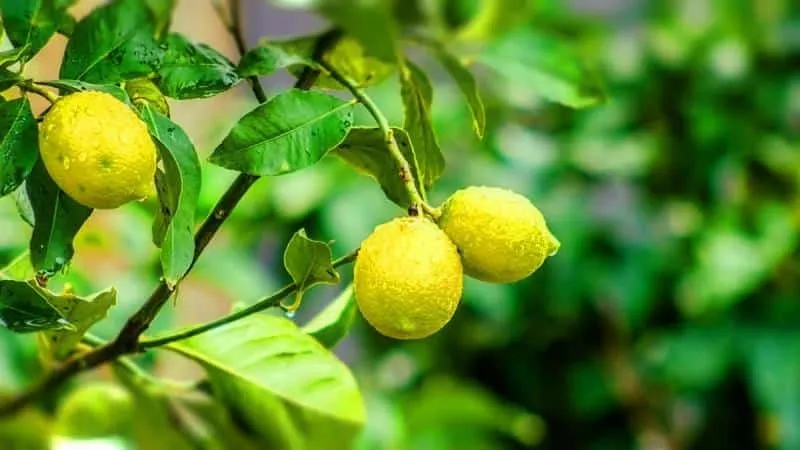
The leaves are leathery, dense, green, and oval-shaped with serrated edges. They contain numerous glands with essential oils, which give the tree its citrusy aroma and improve indoor air quality.
Lemon flowers are pink or purple on the outside and white or pale yellow inside. Buds develop over 4-5 weeks. Once open, the flowers remain for up to 9 weeks, emitting a delicate, pleasant fragrance.
Lemon is not only decorative but also a fruit-bearing tree. Even non-grafted indoor plants can produce fruit. However, grafting accelerates growth and allows for an earlier harvest.
Flowering begins in 2-3 years, but a full yield can only be expected after 4-7 years.
From the appearance of the ovary to fruit maturity, about 9 months pass. Indoor lemons are smaller than those grown in greenhouses or outdoors.
Note! Lemons can be propagated not only from seeds but also from cuttings.
Planting Lemon Seeds at Home
Growing a lemon tree at home is not difficult. The key is selecting and planting the seeds correctly, as this determines whether they will sprout and thrive after transplantation.
Selecting and Preparing Seeds
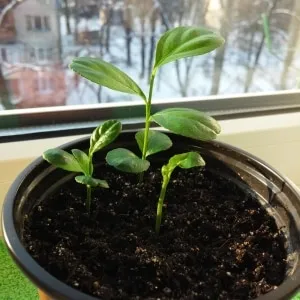
Lemon seeds can be purchased from specialized stores or collected from ripe fruits. The latter option is more cost-effective and commonly used. However, the exact variety of the future tree remains unknown.
Choose ripe, unblemished fruits without green spots, damage, rot, or signs of disease. The lemon should be as symmetrical and attractive as possible.
The thickness of the peel and the fruit’s color do not affect seed quality. These traits indicate the lemon variety and hint at the future tree’s fruit characteristics.
Seeds are extracted from the fruit. For planting, select large, undamaged seeds free of disease.
Lemon seeds should not be dried, as this slows germination. To reduce infection risk and speed up sprouting, treat them as follows:
- Disinfection. Soak seeds for 30 minutes in a solution of "Fitosporin," light pink potassium permanganate, or hydrogen peroxide.
- Growth stimulation. Soak seeds for 12 hours in "Epin," "Soluble," or another growth stimulant. Some use natural remedies, such as an ash solution or aloe vera juice diluted 1:1 with water.
Occasionally, seeds are pre-warmed by placing them near a radiator overnight.
Preparing Soil and Pots
Before planting, prepare the soil. A universal seedling mix or specialized citrus soil works well. These are available at garden centers.
Many prefer making their own soil mix. Combine 2 parts compost, 2 parts garden soil, 1 part sand or peat, and 1 tablespoon of ash.
Homemade or store-bought soil must be disinfected:
- Bake in the oven;
- Water with a dark pink potassium permanganate solution;
- Treat with a copper sulfate solution (1 tbsp per 5 liters of boiling water).
When growing lemons in pots, drainage is essential – use broken ceramics, coarse sand, expanded clay, small gravel, or decorative glass stones. Disinfect drainage the same way as soil.
Seeds can be planted in shared trays, pots, or cut bottles. Since seedlings will need transplanting, a shared container is more practical.
Containers should also be sterilized: rinse with boiling water or soak for 30 minutes in a dark pink potassium permanganate solution.
Important! If using homemade containers, ensure drainage holes at the bottom.
Step-by-Step Planting Guide
Follow these steps: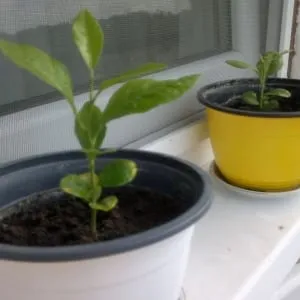
- Add a 1 cm drainage layer at the bottom. Fill the rest with soil, leaving 2-4 cm from the rim.
- Moisten the soil with warm water using a spray bottle.
- Plant seeds 2 cm deep, spacing them at least 5 cm apart.
- Press the soil lightly and mist again.
- Cover the tray with plastic wrap and place it in a warm spot.
Alternatively, use cut bottles covered with their tops.
Caring for a Lemon Tree at Home
Indoor lemon trees often lose leaves, fail to bloom, or die prematurely due to improper care. Citrus cultivation differs significantly from typical houseplants.
To ensure longevity and abundant harvests, consistent care is crucial.
Care Before First Transplant
Seeds sprout in 2-4 weeks. Transplant seedlings after 3-4 true leaves appear. Until then, proper care is essential.
Step-by-step care guide for young seedlings:
- Lemon trees thrive in high humidity. Keep seedlings covered until 2 true leaves form.
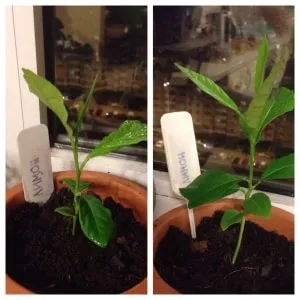
- Water seedlings 2-3 times weekly with a spray bottle. The soil should stay moist. Use room-temperature, settled water.
- Maintain humidity above 80%.
- Ventilate daily by uncovering for 30-60 minutes.
- Avoid direct sunlight; keep trays away from windowsills.
- Remove weeds promptly.
- Keep room temperature below +22°C.
- No fertilizers are needed at this stage.
Selecting Seedlings and Transplanting
When seedlings develop 3-4 true leaves, transplant them into individual pots. Choose the healthiest ones based on:
- Foliage density. Opt for plants with closely spaced buds.
- Thorns. Select seedlings with minimal thorns.
- Leaves. More leaves are better. They should be vibrant green and stay intact when shaken.
Discard weak or dull-leaved seedlings.
Gently remove chosen seedlings with a fork, keeping soil around roots intact.
Clay pots (minimum 10 cm diameter, 20 cm height) work best. Sterilize pots, add drainage, fill with soil, and water. Plant without burying the root neck. Shield from sunlight until established.
Ongoing Care
Proper care ensures healthy growth. After transplanting, follow these guidelines.
Lighting
In spring and summer, natural light suffices if placed near a window. Rotate the pot slightly weekly.
In winter, supplement with a grow light (5 hours daily, 20 cm above the plant).
Watering and Misting
Maintain humidity by misting with settled water. In summer, mist 3 times weekly; in winter (near radiators), do so daily.
Water every other day from late spring to early autumn. Reduce to twice weekly in colder months. Use room-temperature water.
Wipe dust off leaves weekly with a damp cloth.
Soil Aeration
Loosen soil the day after watering using a small rake or fork.
Fertilization
For the first 2 years, fertilize every 6 weeks. Mature trees need feeding every 2-3 weeks in warm months and every 6 weeks in winter.
Use birch leaf and ash infusion, diluted manure (1:10), superphosphate, or specialized citrus fertilizers.
Repotting
Repot annually for the first 3 years, then every 2-3 years. Increase pot size by 5-7 cm each time.
Temperature
Ideal temperatures: +15…+18°C. During flowering, avoid exceeding +22°C to prevent bud drop. Winter rest at +12…+14°C is beneficial.
Pruning
Proper shaping ensures fruiting. Follow this method: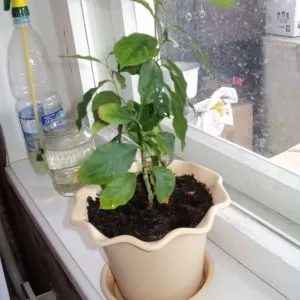
- Pinch the main stem at 20-30 cm height.
- Pinch the next shoot at 15-18 cm above the first pinch, leaving 4 healthy buds.
- Pinch subsequent shoots at 20-30 cm, then trim to 5 cm after maturation.
- Each new tier should be 5 cm shorter than the last.
Finish shaping at the 4th tier. Fruit forms on 3rd and 4th-tier branches.
Challenges and Tips
Key considerations for lemon tree care:
- Remove first-year flowers to prevent energy depletion.
- In years 2-3, keep 2-3 buds; from year 4, allow full flowering.
- Wrap the base with copper wire in year 2 to boost yield. The bark will eventually cover it.
- Yellow leaves indicate under-watering, poor nutrition, waterlogging, or dry air.
- If growth stalls in winter, pause fertilizing to allow dormancy.
Diseases and Pests of Indoor Lemon Trees
Indoor plants face fewer pests than outdoor ones. Common issues include mealybugs, aphids, spider mites, and scale insects.
Control methods: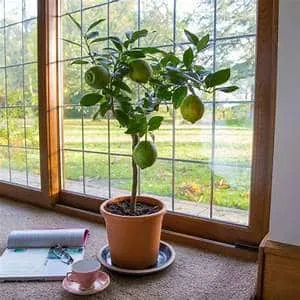
- Manual removal. Use a soapy toothbrush or cotton swab to scrub pests off. Rinse after 24 hours.
- Home remedies. Spray with orange peel infusion, herbal decoction, or tobacco solution (add soap).
- Chemical treatments. Use products like "Neem Oil" or "Insecticidal Soap" if natural methods fail.
Indoor lemons may suffer from fungal infections or gummosis. Fungus causes gray leaf coating; gummosis leads to sap oozing from branches. Untreated, these can be fatal.
Treatment steps:
- Scrape affected bark and treat with copper sulfate.
- Apply plant wound paste or grafting wax.
- Wipe fungal spots with a damp cloth.
Post-treatment, fertilize to aid recovery.
Conclusion
Growing a lemon tree from a seed at home is achievable. With proper seed selection and care, in 4-7 years, you’ll have not just a decorative plant but a fruitful tree yielding abundant harvests.







